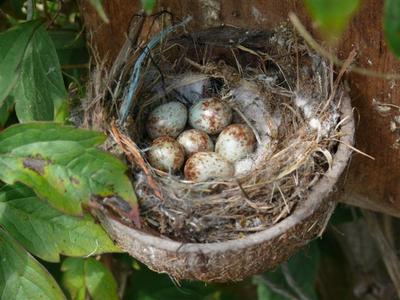Worcestershire Record No. 26 April 2009 p. 39
SPOTTED FLYCATCHER CAN YOU HELP?
An appeal for help from John Clarke
For the past eight years John Clarke has been studying Spotted Flycatchers in
villages in south Worcestershire. The bird is in serious decline in Britain
the population has crashed by more than 70% in the past 20 years or so. In
Worcestershire this endearing small migrant from southern Africa is now mainly
confined to a few villages and the situation is similar in many other counties.
The British Trust for Ornithology receives records of breeding birds from
volunteers around the country but there are not enough to provide detailed
information about all species. This is particularly true for the Spotted
Flycatcher, which in many areas is now breeding almost exclusively in private
gardens and orchards where there is no public access.
Johns survey has enlisted the help and cooperation of local communities to
locate pairs in the villages and the project has been very successful. Now he
would like to find out more about the distribution of the Spotted Flycatcher
further afield and he is asking for your help. He would like people to watch for
the birds from early May onwards and to see if they are nesting in their garden
or local area. They would almost certainly be breeding if you saw evidence of a
pair regularly they have quite a small territory, rarely feeding more than
25-50 metres from the nest site. Their habit of sitting on prominent perches
from where they hunt flying insects makes them easier to see than hear as they
have a very week song.
John has set up an email address or you can send information by post (see
below). Once you have located a pair all that he requires is that you tell him
the 6-figure Ordnance Survey grid reference for your sighting, the date
that you found the pair and your name and address so that he can
produce a distribution map for example:
Spotted Flycatcher record
Joe Bloggs The Granary, Goddlethorpe, Worcs. OS ref BC765 432
6/6/09.
If you can watch your nest without disturbing the birds and note the outcome
how many young fledge, how many broods etc John will always be
interested in extra information and observations but the above details are the
critical requirement. If you have two or more pairs in your area it would be
good to get separate records Spotted Flycatchers often nest in clusters
in one area of a village so where there is one pair you may find others. Perhaps
your neighbours have another pair? Have they nested near you in the past two
years that would also be important information. You could also help by
putting a small note about the survey, with details of what is required, in your
local Parish Magazine.
John hopes to use the information to gain a better understanding of where the
remaining population of birds choose to breed. He is hoping that people from
several counties will take part and would appreciate your help.
Email address: flycatcherdata@googlemail.com

